Shaping a View on the Influence of Technologies on Sustainable Tourism
Abstract
:1. Introduction
2. Materials and Methods
2.1. Seach Protocol and Data Collection
2.2. Data Analysis
3. Results
3.1. Cooperative Network of Authors, Countries of Affiliation and Documents
3.2. Citation and Co-Citation Analysis
3.3. Co-Occurrences of Keywords
4. Discussion
4.1. Main Research Fronts on Technology, Sustainable Development and Tourism
4.1.1. Review of Theories, Frameworks, and Literature on the Role of New Technologies and Accelerating the Innovation Roadmap
4.1.2. The Impact of New Technology Adoption for Sustainable Development and Social (In)equality
4.1.3. The Benefits of Digital Transformation for Market Competition, SMEs’ Strategy, and Reputation Management
4.1.4. Adoption of New Technologies: Barriers, Drivers, and Perceived Added Value
4.1.5. Technology as Enabler of H&T Sustainable Development, Competitiveness, and Customer Experience
4.2. Future Research Agenda
- Transversal research questions:
- 1.
- How to create trust in the adoption of new technologies, breaking old habits and building a better comprehension of its merits?
- 2.
- What are the reasons for/against adopting co-creation platforms, and how will these platforms gain relevance in the practices of H&T stakeholders (e.g., consumers, entrepreneurs, service agents, workers)?
- 3.
- How will the creation of global digital ecosystems (such as the new EU digital market) relate to the achievement of sustainable development goals in H&T?
- Questions about customer engagement:
- 4.
- What is the relationship between travellers’ values, beliefs, profiles, and their behavioural intentions towards using AI-enabled travel service agents (e.g., chatbots)?
- 5.
- What are their attitudes towards, and/or propensity to interact, with digital humans? What are their preferred ways of interaction?
- 6.
- What are expectations and/or propensity to interact with VR and AR-enabled experiences?
- Questions at nationwide, regional or destination levels:
- 7.
- How will technology boost destinations’ innovativeness and competitiveness, leveraging enriched customer experiences? Which areas of impact and digital innovations should be prioritized?
- 8.
- Which stakeholders should be involved in the process of designing collaborative strategies?
- 9.
- Which factors can enable/inhibit AI adoption? How do they vary across regions or type of destination?
- Questions at the organizational level:
- 10.
- How to make AI adoption compatible with promoting a more productive workplace, a better employer engagement, and more decent labor practices in H&T?
- 11.
- What role can big data play for enhancing the marketing performance of H&T operators, or other related service providers?
- 12.
- What is the relationship between digitalization and internationalization of tourism agents, and the effects of their sustainability-readiness?
- 13.
- What new AI applications in the social media and digital advertising ecosystems, including automated, algorithm-based online conversation analysis, can support the post-pandemic turnaround and reputation management of H&T firms?
- 14.
- How can leader STARA competences, green creativity components and environmental dynamism aid tourism organizations to boost their GOIE?
- 15.
- What are the critical success factors for entrepreneurs/SMEs to be aware and trust on AI benefits, without compromising their identity?
4.3. Theoretical Implications
4.4. Managerial and Social Implications
4.5. Limitations of the Systematic and Bibliometric Process
5. Conclusions
Author Contributions
Funding
Institutional Review Board Statement
Informed Consent Statement
Data Availability Statement
Conflicts of Interest
References
- Untaru, E.N.; Ispas, A.; Candrea, A.N.; Luca, M.; Epuran, G. Predictors of Individuals’ Intention to Conserve Water in a Lodging Context: The Application of an Extended Theory of Reasoned Action. Int. J. Hosp. Manag. 2016, 59, 50–59. [Google Scholar] [CrossRef]
- Choi, H.; Jang, J.; Kandampully, J. Application of the Extended VBN Theory to Understand Consumers’ Decisions about Green Hotels. Int. J. Hosp. Manag. 2015, 51, 87–95. [Google Scholar] [CrossRef]
- Sung, Y.A.; Kim, K.W.; Kwon, H.J. Big Data Analysis of Korean Travelers’ Behavior in the Post-COVID-19 Era. Sustainability 2021, 13, 310. [Google Scholar] [CrossRef]
- Miceli, A.; Hagen, B.; Riccardi, M.P.; Sotti, F.; Settembre-Blundo, D. Thriving, Not Just Surviving in Changing Times: How Sustainability, Agility and Digitalization Intertwine with Organizational Resilience. Sustainability 2021, 13, 2052. [Google Scholar] [CrossRef]
- Filimonau, V.; Matute, J.; Mika, M.; Faracik, R. National Culture as a Driver of Pro-Environmental Attitudes and Behavioural Intentions in Tourism. J. Sustain. Tour. 2018, 26, 1804–1825. [Google Scholar] [CrossRef]
- Kim, K.H.; Park, D.B. Relationships among Perceived Value, Satisfaction, and Loyalty: Community-Based Ecotourism in Korea. J. Travel Tour. Mark. 2017, 34, 171–191. [Google Scholar] [CrossRef]
- Loureiro, S.M.C.; Guerreiro, J.; Han, H. Past, Present, and Future of pro-Environmental Behavior in Tourism and Hospitality: A Text-Mining Approach. J. Sustain. Tour. 2021, 1–21, ahead-of-print. [Google Scholar] [CrossRef]
- United Nations World Tourism Organization Sustainable Tourism Development. Available online: https://www.unwto.org/sustainable-development (accessed on 19 October 2021).
- Spencer, J. The sustainable development goals. Available online: https://unstats.un.org/sdgs/report/2020/The-Sustainable-Development-Goals-Report-2020.pdf (accessed on 4 May 2021).
- De Carlo, M.; Ferilli, G.; d’Angella, F.; Buscema, M. Artificial Intelligence to Design Collaborative Strategy: An Application to Urban Destinations. J. Bus. Res. 2021, 129, 936–948. [Google Scholar] [CrossRef]
- Lalicic, L.; Weismayer, C. Consumers’ Reasons and Perceived Value Co-Creation of Using Artificial Intelligence-Enabled Travel Service Agents. J. Bus. Res. 2021, 129, 891–901. [Google Scholar] [CrossRef]
- Golja, T.; Paulišić, M. Managing-Technology Enhanced Tourist Experience: The Case of Scattered Hotels in Istria. Management 2021, 26, 63–95. [Google Scholar] [CrossRef]
- de Kervenoael, R.; Hasan, R.; Schwob, A.; Goh, E. Leveraging Human-Robot Interaction in Hospitality Services: Incorporating the Role of Perceived Value, Empathy, and Information Sharing into Visitors’ Intentions to Use Social Robots. Tour. Manag. 2020, 78, 104042. [Google Scholar] [CrossRef]
- Loureiro, S.M.C.; Japutra, A.; Molinillo, S.; Bilro, R. Stand by Me: Analyzing the Tourist–Intelligent Voice Assistant Relationship Quality. Int. J. Contemp. Hosp. Manag. 2021, 33, 3840–3859. [Google Scholar] [CrossRef]
- Loureiro, S.M.C. Managerial Challenges and Social Impacts of Virtual and Augmented Reality. In Managerial Challenges and Social Impacts of Virtual and Augmented Reality; IGI Global: Hershey, PA, USA, 2020; pp. 1–280. ISBN 9781799828747. [Google Scholar]
- Sharmin, F.; Tipu Sultan, M.; Badulescu, D.; Badulescu, A.; Borma, A.; Li, B. Sustainable Destination Marketing Ecosystem through Smartphone-Based Social Media: The Consumers’ Acceptance Perspective. Sustainability 2021, 13, 2308. [Google Scholar] [CrossRef]
- Guttentag, D.A. Virtual Reality: Applications and Implications for Tourism. Tour. Manag. 2010, 31, 637–651. [Google Scholar] [CrossRef]
- Loureiro, S.M.C.; Guerreiro, J.; Ali, F. 20 Years of Research on Virtual Reality and Augmented Reality in Tourism Context: A Text-Mining Approach. Tour. Manag. 2020, 77, 104028. [Google Scholar] [CrossRef]
- Loureiro, S.M.C.; Guerreiro, J.; Eloy, S.; Langaro, D.; Panchapakesan, P. Understanding the Use of Virtual Reality in Marketing: A Text Mining-Based Review. J. Bus. Res. 2019, 100, 514–530. [Google Scholar] [CrossRef]
- Loureiro, S.M.C. The Use of Augmented Reality to Expand the Experience in Museums. In Augmented Reality in Tourism, Museums and Heritage: A New Technology to Inform and Entertain; Geroimenko, V., Ed.; Springer: Berlin, Germany, 2021; ISBN 978-3-030-70198-7. [Google Scholar]
- Loureiro, S.M.C. Virtual reality, augmented reality and tourism experience. In Handbook of Tourism Experience Management and Marketing; Kumar, S., Ed.; Routledge: Oxford, UK, 2020; pp. 439–452. ISBN 978-0-429-20391-6. [Google Scholar]
- Loureiro, S.M.C.; Guerreiro, J.; Tussyadiah, I. Artificial Intelligence in Business: State of the Art and Future Research Agenda. J. Bus. Res. 2021, 129, 911–926. [Google Scholar] [CrossRef]
- Huang, M.H.; Rust, R.T. Artificial Intelligence in Service. J. Serv. Res. 2018, 21, 155–172. [Google Scholar] [CrossRef]
- Broadus, R.N. Toward a Definition of “Bibliometrics”. Scientometrics 1987, 12, 373–379. [Google Scholar] [CrossRef]
- Pereira, V.; Bamel, U. Extending the Resource and Knowledge Based View: A Critical Analysis into Its Theoretical Evolution and Future Research Directions. J. Bus. Res. 2021, 132, 557–570. [Google Scholar] [CrossRef]
- Donthu, N.; Kumar, S.; Mukherjee, D.; Pandey, N.; Lim, W.M. How to Conduct a Bibliometric Analysis: An Overview and Guidelines. J. Bus. Res. 2021, 133, 285–296. [Google Scholar] [CrossRef]
- Van Eck, N.J.; Waltman, L. Software Survey: VOSviewer, a Computer Program for Bibliometric Mapping. Scientometrics 2010, 84, 523–538. [Google Scholar] [CrossRef] [Green Version]
- Bec, A.; Moyle, B.; Timms, K.; Schaffer, V.; Skavronskaya, L.; Little, C. Management of Immersive Heritage Tourism Experiencs: A Conceptual Model. Tour. Manag. 2019, 72, 117–120. [Google Scholar] [CrossRef]
- Bec, A.; Moyle, B.; Schaffer, V.; Timms, K. Virtual Reality and Mixed Reality for Second Chance Tourism. Tour. Manag. 2021, 83, 104256. [Google Scholar] [CrossRef]
- Bag, S.; Gupta, S.; Kumar, S.; Sivarajah, U. Role of Technological Dimensions of Green Supply Chain Management Practices on Firm Performance. J. Enterp. Inf. Manag. 2020, 34, 1–27. [Google Scholar] [CrossRef]
- Mir, U.; Kar, A.K.K.; Gupta, M.P. AI-Enabled Digital Identity–Inputs for Stakeholders and Policymakers. J. Sci. Technol. Policy Manag. 2021. ahead-of-print. [Google Scholar] [CrossRef]
- Nair, K.; Gupta, R. Application of AI Technology in Modern Digital Marketing Environment. World J. Entrep. Manag. Sustain. Dev. 2020, 17, 318–328. [Google Scholar] [CrossRef]
- Gupta, S.; Justy, T.; Kamboj, S.; Kumar, A.; Kristoffersen, E. Big Data and Firm Marketing Performance: Findings from Knowledge-Based View. Technol. Forecast. Soc. Chang. 2021, 171, 120986. [Google Scholar] [CrossRef]
- Ogbeibu, S.; Jabbour, C.J.C.; Gaskin, J.; Senadjki, A.; Hughes, M. Leveraging STARA Competencies and Green Creativity to Boost Green Organisational Innovative Evidence: A Praxis for Sustainable Development. Bus. Strategy Environ. 2021, 30, 2421–2440. [Google Scholar] [CrossRef]
- Ogbeibu, S.; Chiappetta Jabbour, C.J.; Burgess, J.; Gaskin, J.; Renwick, D.W.S. Green Talent Management and Turnover Intention: The Roles of Leader STARA Competence and Digital Task Interdependence. J. Intellect. Cap. 2021. [Google Scholar] [CrossRef]
- Huang, T.L.; Liao, S. A Model of Acceptance of Augmented-Reality Interactive Technology: The Moderating Role of Cognitive Innovativeness. Electron. Commer. Res. 2015, 15, 269–295. [Google Scholar] [CrossRef] [Green Version]
- Sjödin, D.R.; Parida, V.; Leksell, M.; Petrovic, A. Smart Factory Implementation and Process Innovation: A Preliminary Maturity Model for Leveraging Digitalization in Manufacturing Moving to Smart Factories Presents Specific Challenges That Can Be Addressed through a Structured Approach Focused on People, Processes, and Technologies. Res. Technol. Manag. 2018, 61, 22–31. [Google Scholar] [CrossRef] [Green Version]
- Jiang, Y.; Wen, J. Effects of COVID-19 on Hotel Marketing and Management: A Perspective Article. Int. J. Contemp. Hosp. Manag. 2020, 32, 2563–2573. [Google Scholar] [CrossRef]
- Podsakoff, P.M.; Mackenzie, S.B.; Bachrach, D.G.; Podsakoff, N.P. The Influence of Management Journals in the 1980s and 1990s. Strateg. Manag. J. 2005, 26, 473–488. [Google Scholar] [CrossRef]
- Bag, S.; Pretorius, J.H.C.; Gupta, S.; Dwivedi, Y.K. Role of Institutional Pressures and Resources in the Adoption of Big Data Analytics Powered Artificial Intelligence, Sustainable Manufacturing Practices and Circular Economy Capabilities. Technol. Forecast. Soc. Chang. 2021, 163, 120420. [Google Scholar] [CrossRef]
- Braganza, A.; Chen, W.; Canhoto, A.; Sap, S. Productive Employment and Decent Work: The Impact of AI Adoption on Psychological Contracts, Job Engagement and Employee Trust. J. Bus. Res. 2021, 131, 485–494. [Google Scholar] [CrossRef]
- Fahimnia, B.; Sarkis, J.; Davarzani, H. Green Supply Chain Management: A Review and Bibliometric Analysis. Int. J. Prod. Econ. 2015, 162, 101–114. [Google Scholar] [CrossRef]
- Zabel, C.; Telkmann, V. The Adoption of Emerging Technology-Driven Media Innovations. A Comparative Study of the Introduction of Virtual and Augmented Reality in the Media and Manufacturing Industries. J. Media Bus. Stud. 2020, 1–32. [Google Scholar] [CrossRef]
- Earle, A.G.; Leyva-de la Hiz, D.I. The Wicked Problem of Teaching about Wicked Problems: Design Thinking and Emerging Technologies in Sustainability Education. Manag. Learn. 2020, 52, 581–603. [Google Scholar] [CrossRef]
- Joerß, T.; Hoffmann, S.; Mai, R.; Akbar, P. Digitalization as Solution to Environmental Problems? When Users Rely on Augmented Reality-Recommendation Agents. J. Bus. Res. 2021, 128, 510–523. [Google Scholar] [CrossRef]
- Geus, M.D.E. Ecotopia, Sustainability, and Vision. Organ. Environ. 2002, 15, 187–201. [Google Scholar] [CrossRef]
- Martins, N.; Dominique-Ferreira, S.; Pinheiro, C. Bridging Tourism, Architecture, and Sustainability: Design and Development of an App for Contemporary Architecture Built in Portugal. J. Glob. Sch. Mark. Sci. 2021, 1–18, ahead-of-print. [Google Scholar] [CrossRef]
- Coghlan, A.; Carter, L. Serious Games as Interpretive Tools in Complex Natural Tourist Attractions. J. Hosp. Tour. Manag. 2020, 42, 258–265. [Google Scholar] [CrossRef]
- Streimikiene, D.; Korneeva, E. Economic Impacts of Innovations in Tourism Marketing. Terra Econ. 2020, 18, 182–193. [Google Scholar] [CrossRef]
- Allahviranloo, M.; Recker, W. Daily Activity Pattern Recognition by Using Support Vector Machines with Multiple Classes. Transp. Res. Part B Methodol. 2013, 58, 16–43. [Google Scholar] [CrossRef]
- Hyun Park, S.; Seon Shin, W.; Hyun Park, Y.; Lee, Y. Building a New Culture for Quality Management in the Era of the Fourth Industrial Revolution. Total Qual. Manag. Bus. Excell. 2017, 28, 934–945. [Google Scholar] [CrossRef]
- Ramakrishna, S.; Ngowi, A.; de Jager, H.; Awuzie, B.O. Emerging Industrial Revolution: Symbiosis of Industry 4.0 and Circular Economy: The Role of Universities. Sci. Technol. Soc. 2020, 25, 505–525. [Google Scholar] [CrossRef]
- Keenan, J.; Kemp, D.; Owen, J. Corporate Responsibility and the Social Risk of New Mining Technologies. Corp. Soc. Responsib. Environ. Manag. 2019, 26, 752–760. [Google Scholar] [CrossRef]
- Goralski, M.A.; Tan, T.K. Artificial Intelligence and Sustainable Development. Int. J. Manag. Educ. 2020, 18, 100330. [Google Scholar] [CrossRef]
- Ullal, M.S.; Hawaldar, I.T.; Mendon, S.; Joseph, N. The Effect of Artificial Intelligence on the Sales Graph in Indian Market. Entrep. Sustain. Issues 2020, 7, 2940–2954. [Google Scholar] [CrossRef]
- Cai, Y.; Etzkowitz, H. Theorizing the Triple Helix Model: Past, Present, and Future. Triple Helix 2020, 7, 189–226. [Google Scholar] [CrossRef]
- Cuypers, I.R.P.; Hennart, J.F.; Silverman, B.S.; Ertug, G. Transaction Cost Theory: Past Progress, Current Challenges, and Suggestions for the Future. Acad. Manag. Ann. 2021, 15, 111–150. [Google Scholar] [CrossRef]
- Füller, J.; Hutter, K.; Kröger, N. Crowdsourcing as a Service–from Pilot Projects to Sustainable Innovation Routines. Int. J. Proj. Manag. 2021, 39, 183–195. [Google Scholar] [CrossRef]
- Makowski, P.T.; Kajikawa, Y. Automation-Driven Innovation Management? Toward Innovation-Automation-Strategy Cycle. Technol. Forecast. Soc. Chang. 2021, 168, 120723. [Google Scholar] [CrossRef]
- Kamran, Q.; Topp, S.; Henseler, J. Towards the Co-Evolution of Food Experience Search Spaces Based on the Design Weltanschauung Model in Food Marketing. Cogent Bus. Manag. 2021, 8, 1901643. [Google Scholar] [CrossRef]
- Taghikhah, F.; Voinov, A.; Shukla, N.; Filatova, T. Shifts in Consumer Behavior towards Organic Products: Theory-Driven Data Analytics. J. Retail. Consum. Serv. 2021, 61, 102516. [Google Scholar] [CrossRef]
- Hoepner, A.G.F.; McMillan, D.; Vivian, A.; Wese Simen, C. Significance, Relevance and Explainability in the Machine Learning Age: An Econometrics and Financial Data Science Perspective. Eur. J. Financ. 2021, 27, 1–7. [Google Scholar] [CrossRef]
- Hu, K.H.; Chen, F.H.; Hsu, M.F.; Tzeng, G.H. Identifying Key Factors for Adopting Artificial Intelligence-Enabled Auditing Techniques by Joint Utilization of Fuzzy-Rough Set Theory and MRDM Technique. Technol. Econ. Dev. Econ. 2021, 27, 459–492. [Google Scholar] [CrossRef]
- Milana, C.; Ashta, A. Artificial Intelligence Techniques in Finance and Financial Markets: A Survey of the Literature. Strateg. Chang. 2021, 30, 189–209. [Google Scholar] [CrossRef]
- Mohapatra, S. Human and Computer Interaction in Information System Design for Managing Business. Inf. Syst. E-Bus. Manag. 2021, 19, 1–11. [Google Scholar] [CrossRef]
- Fu, X.M.; Bao, Q.; Xie, H.; Fu, X. Diffusion of Industrial Robotics and Inclusive Growth: Labour Market Evidence from Cross Country Data. J. Bus. Res. 2021, 122, 670–684. [Google Scholar] [CrossRef]
- Latoszek, E. Fostering Sustainable Development through the European Digital Single Market. Econ. Bus. Rev. 2021, 7, 68–89. [Google Scholar] [CrossRef]
- Liengpunsakul, S. Artificial Intelligence and Sustainable Development in China. Chin. Econ. 2021, 54, 235–248. [Google Scholar] [CrossRef]
- Millward-Hopkins, J. Back to the Future: Old Values for a New (More Equal) World. Futures 2021, 128, 102727. [Google Scholar] [CrossRef]
- Thiebes, S.; Lins, S.; Sunyaev, A. Trustworthy Artificial Intelligence. Electron. Mark. 2021, 31, 447–464. [Google Scholar] [CrossRef]
- Walton, N.; Nayak, B.S. Rethinking of Marxist Perspectives on Big Data, Artificial Intelligence (AI) and Capitalist Economic Development. Technol. Forecast. Soc. Chang. 2021, 166, 120576. [Google Scholar] [CrossRef]
- Mor, S.; Madan, S.; Prasad, K.D. Artificial Intelligence and Carbon Footprints: Roadmap for Indian Agriculture. Strateg. Chang. 2021, 30, 269–280. [Google Scholar] [CrossRef]
- Canhoto, A.I. Leveraging Machine Learning in the Global Fight against Money Laundering and Terrorism Financing: An Affordances Perspective. J. Bus. Res. 2021, 131, 441–452. [Google Scholar] [CrossRef]
- Denicolai, S.; Zucchella, A.; Magnani, G. Internationalization, Digitalization, and Sustainability: Are SMEs Ready? A Survey on Synergies and Substituting Effects among Growth Paths. Technol. Forecast. Soc. Chang. 2021, 166, 120650. [Google Scholar] [CrossRef]
- O’Connor, J.; Wilson, N.E. Reduced Demand Uncertainty and the Sustainability of Collusion: How AI Could Affect Competition. Inf. Econ. Policy 2021, 54, 100882. [Google Scholar] [CrossRef]
- Westermann, A.; Forthmann, J. Social Listening: A Potential Game Changer in Reputation Management How Big Data Analysis Can Contribute to Understanding Stakeholders’ Views on Organisations. Corp. Commun. 2021, 26, 2–22. [Google Scholar] [CrossRef]
- Silva, E.S.; Bonetti, F. Digital Humans in Fashion: Will Consumers Interact? J. Retail. Consum. Serv. 2021, 60, 102430. [Google Scholar] [CrossRef]
- Atwal, G.; Bryson, D.; Williams, A. An Exploratory Study of the Adoption of Artificial Intelligence in Burgundy’s Wine Industry. Strateg. Chang. 2021, 30, 299–306. [Google Scholar] [CrossRef]
- Duvnjak, K. Sustainable Development Intelligence Approach. Manag. Res. Pract. 2020, 12, 18–28. [Google Scholar]
- Liu, A.; Ma, E.; Qu, H.; Ryan, B. Daily Green Behavior as an Antecedent and a Moderator for Visitors’ pro-Environmental Behaviors. J. Sustain. Tour. 2020, 28, 1390–1408. [Google Scholar] [CrossRef]
- Rahman, I.; Reynolds, D. The Influence of Values and Attitudes on Green Consumer Behavior: A Conceptual Model of Green Hotel Patronage. Int. J. Hosp. Tour. Adm. 2019, 20, 47–74. [Google Scholar] [CrossRef]
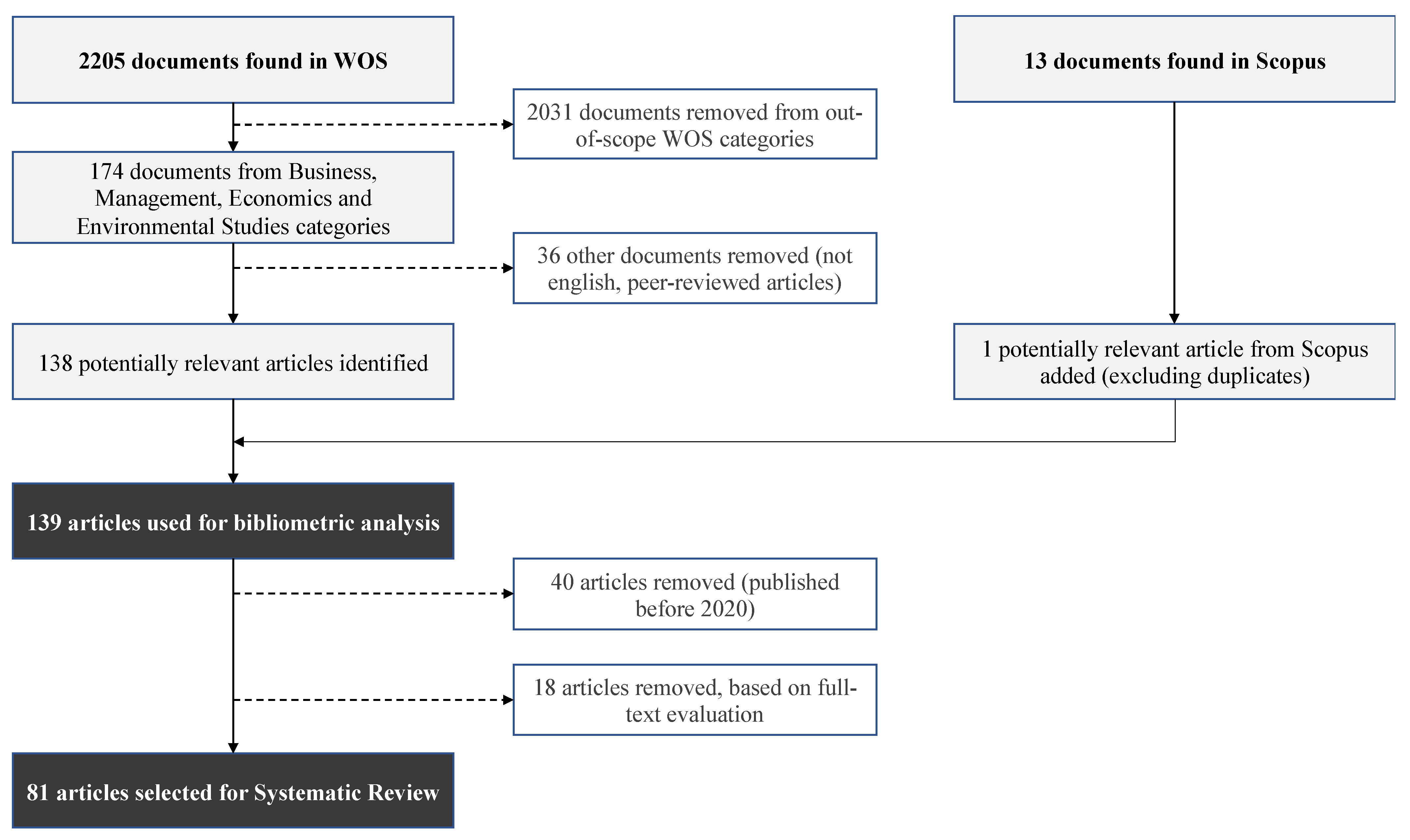
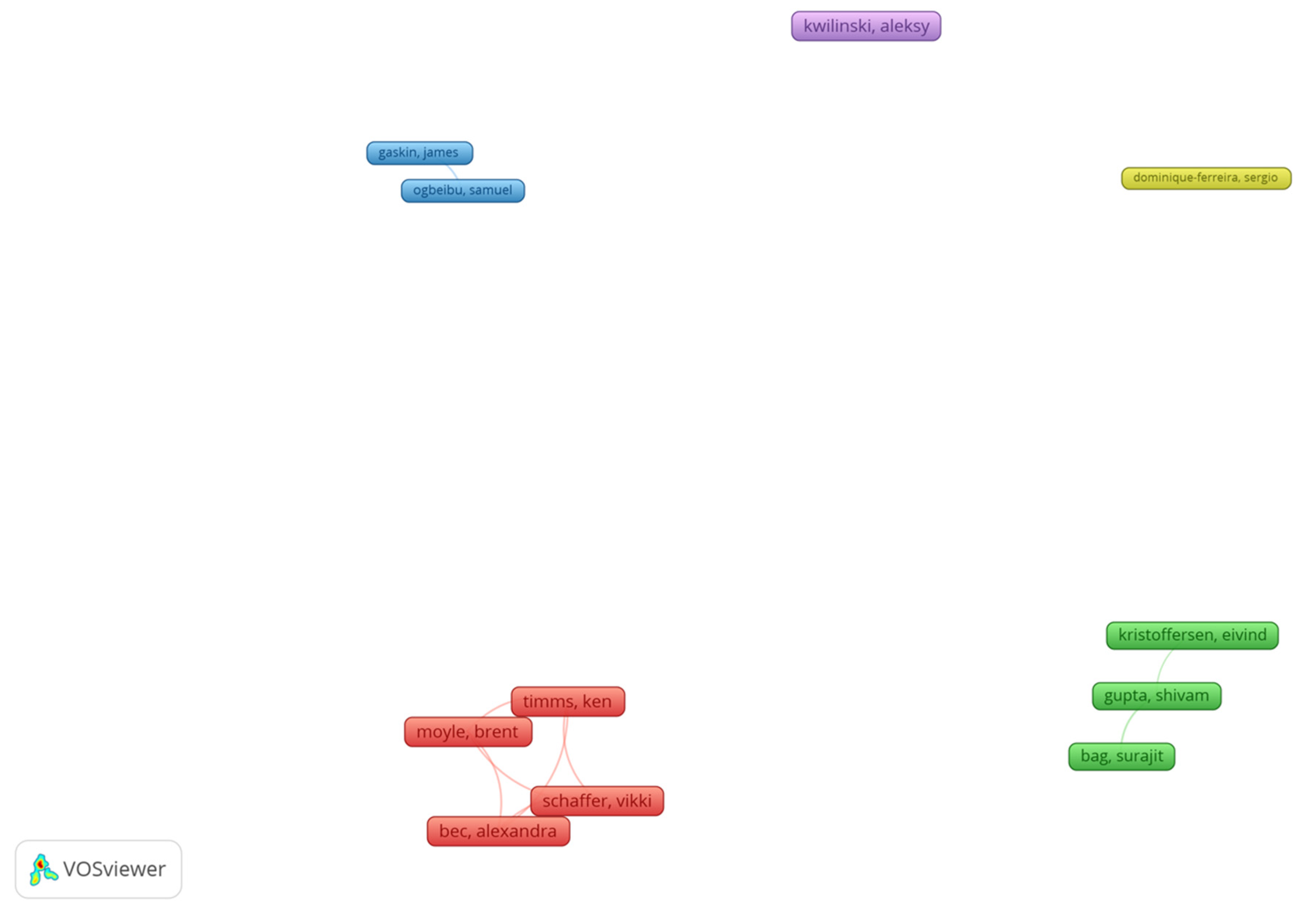
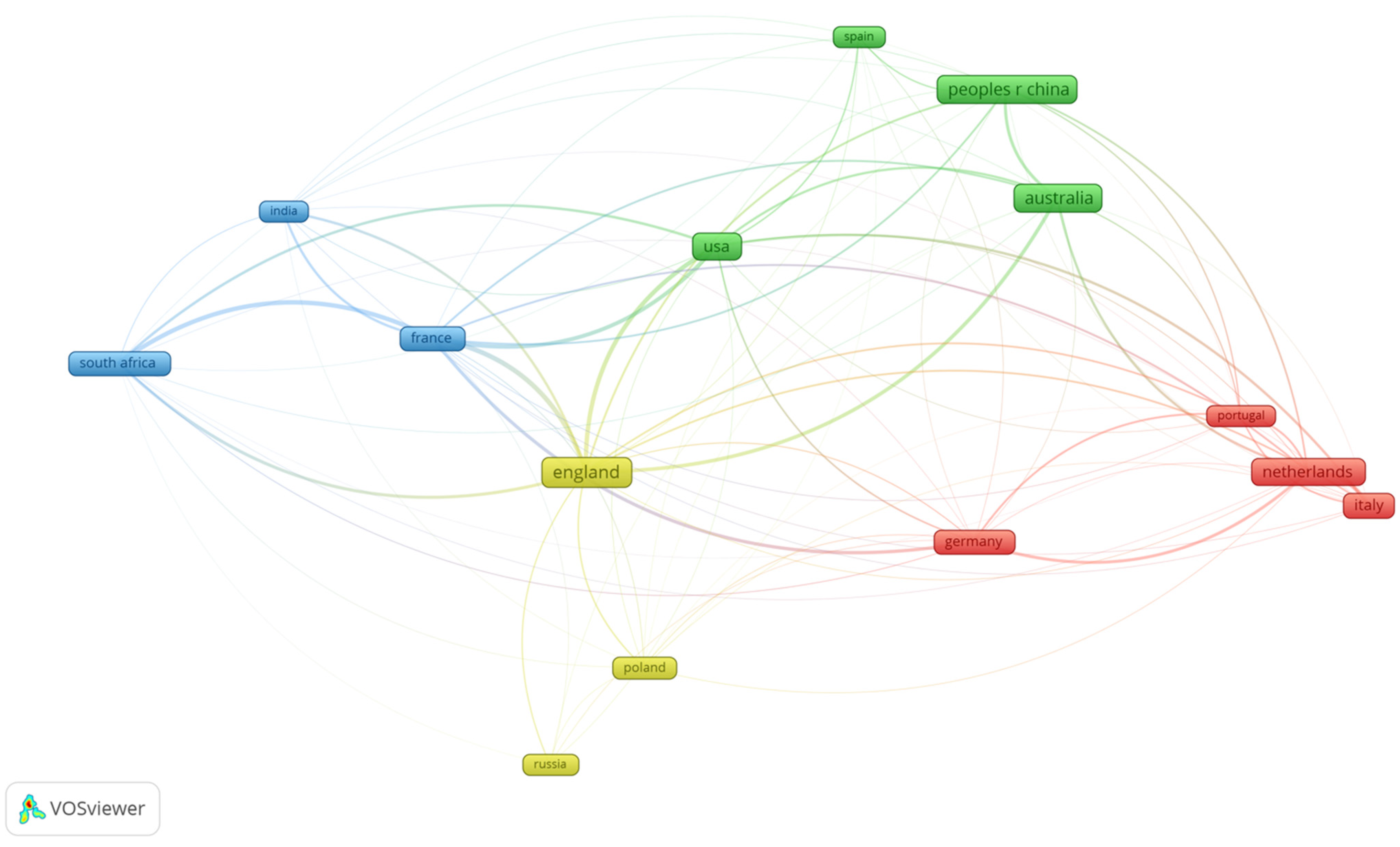
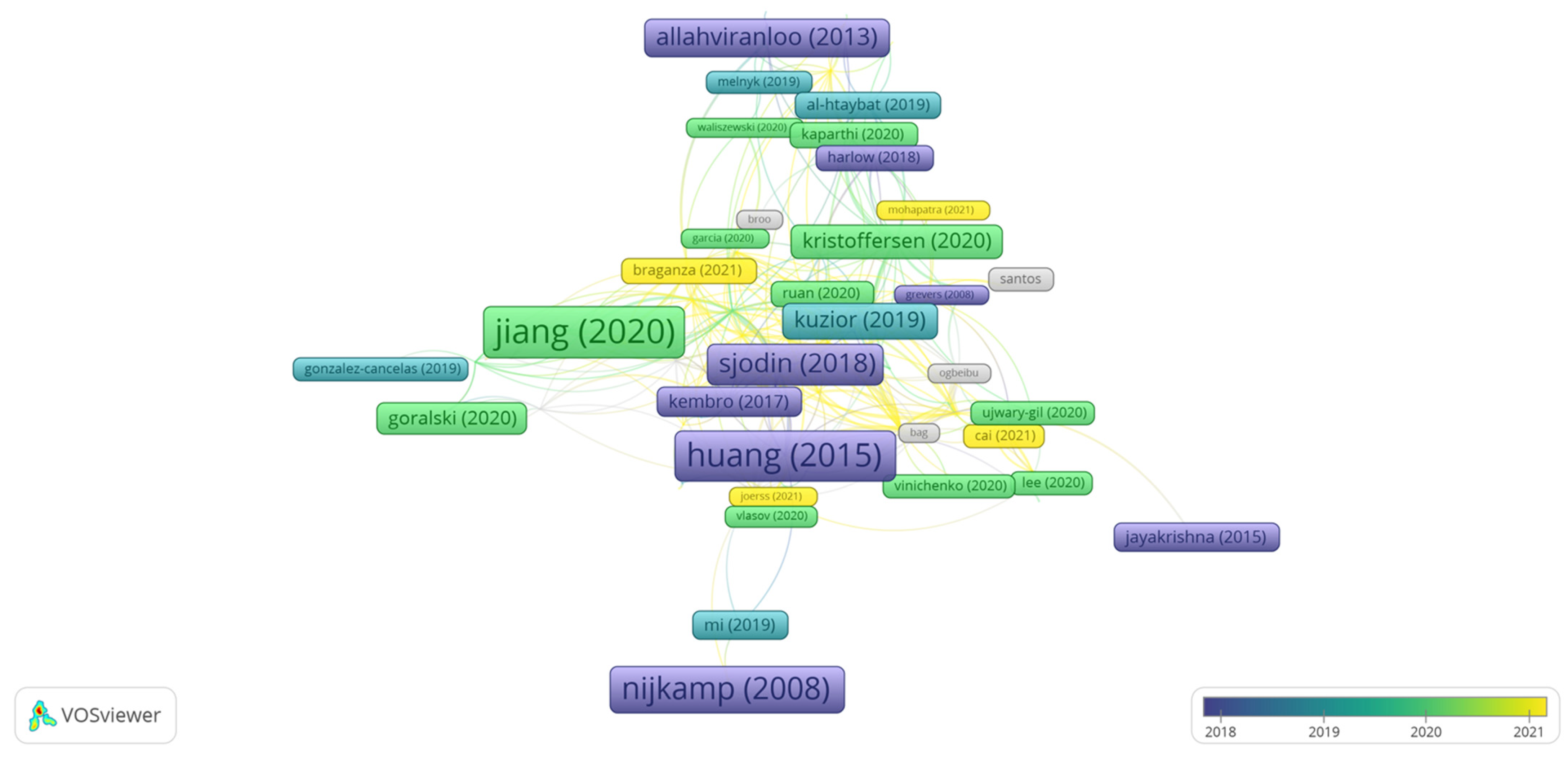
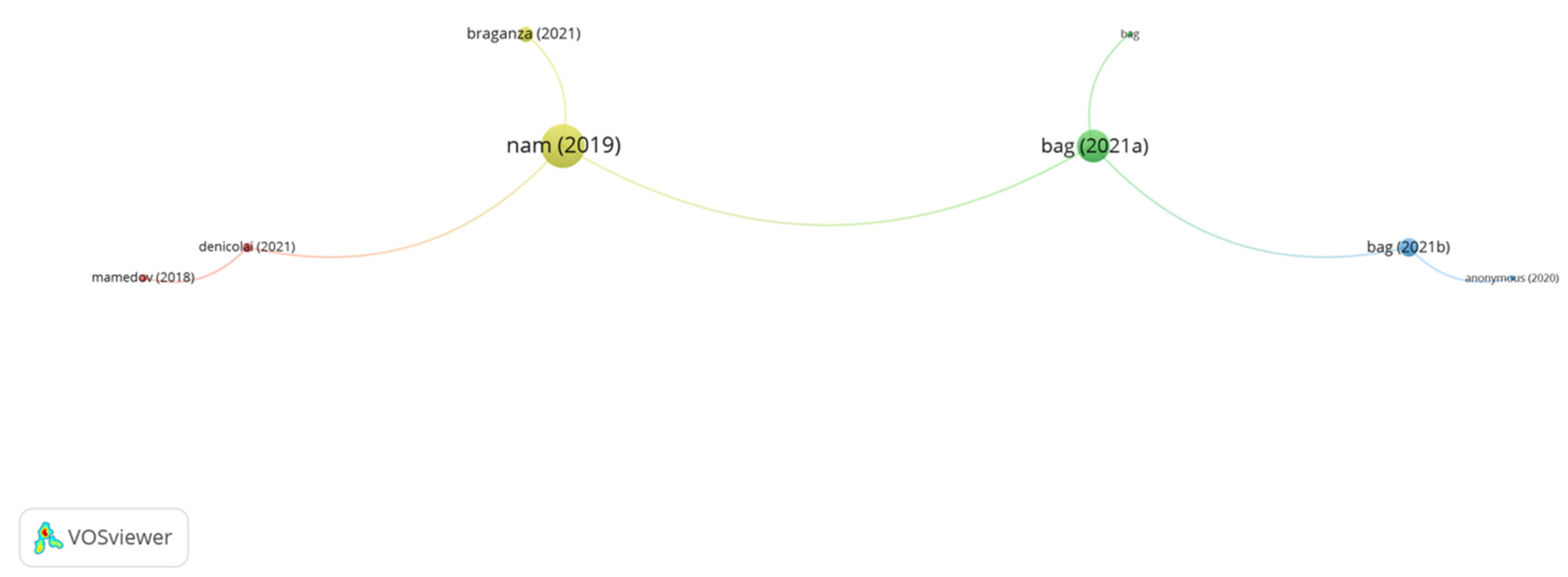

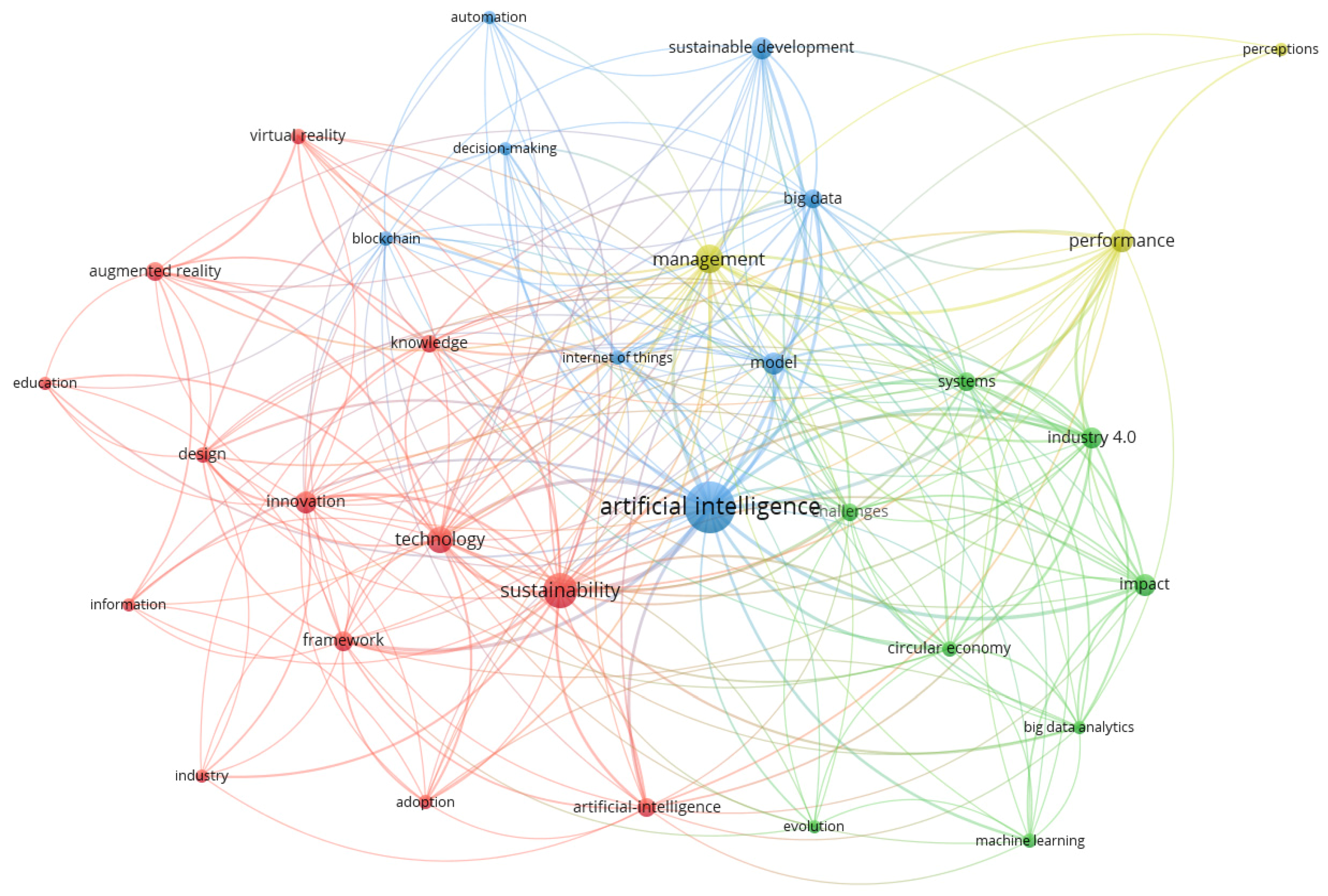
| Main topics | Theories and Frameworks | Stakeholders | Industries | References |
|---|---|---|---|---|
| (1) Review of theories, frameworks, and literature on new technologies’ role and accelerating the innovation roadmap | ||||
| STARA (Smart Technologies, AI, Robotics and Algorithms), environmental dynamism, GOIE (Green Organisational Innovative Evidence), crowdsourcing, open innovation, Big Data | TCT (Transaction Cost Theory), Stakeholder theory, Triple Helix model, Knowledge-based view, IAS (Innovation-Automation-Strategy) cycle | Organisations and Companies, Society (Government-University-Industry) | Transversal | [33,34,56,57,58,59] |
| AI, co-creation, data mining, unsupervised machine learning algorithms | DWA (Design Weltanschauung Model), grounded-theory | Companies, Consumers | Food | [60,61] |
| AI/XAI (explainable AI), Machine learning, FinTech | Neural networks, FRST (Fuzzy-Rough Set theory), MCDM (Multiple Criteria Decision Making) | General Society, Organisations and Companies | Finance and Banking | [62,63,64,65] |
| (2) The impact of new technology adoption for Sustainable Development and Social (In)equality | ||||
| AI (AI readiness, Trustworthy AI), Big Data, IoT, SD, SDM (Single Digital Market), egalitarian societies, industrial robotics, job trust, employee engagement, Sharing Economy | Labour theory of value | Countries and General Society, Employees | Transversal | [41,66,67,68,69,70,71] |
| AI, carbon footprint | Farmers | Agriculture | [72] | |
| AI, Machine learning, Big Data | Organisations and Companies | Finance and Banking | [73] | |
| (3) The benefits of digital transformation for strategy, competitive advantages, and reputation management | ||||
| AI, Social listening, Social and online media, reputation management, anti-trust, price discrimination, big data/market intelligence, internationalization, digitalization, sustainability-readiness | Readiness lifecycle models | Organisations and Companies | Transversal | [74,75,76] |
| AI, Social and online media, content curation, machine learning | Companies and Prosumers | Digital media and advertising | [32] | |
| (4) Adoption of new technologies: barriers, drivers, and perceived added value | ||||
| Digital humans, AR, VR | Consumers | Fashion | [76,77] | |
| AI, technology adoption | Farmers | Agriculture | [78] | |
| AI, big data, circular economy, institutional pressures | Resource-based theory, Institutional theory | Organisations and Companies | Automotive | [40] |
| (5) Technology as enabler of H&T sustainable development, competitiveness and customer experience | ||||
| AI, ANN (Artificial Neural Networks), designing collaborative strategies, co-creation, service agents | Auto-contractive map, Behavioural Reasoning theory, fsQCA (Fuzzy-set qualitative comparative analysis) | Companies and Entrepreneurs, Consumers | Tourism | [10,11,12,13,38,79] |
Publisher’s Note: MDPI stays neutral with regard to jurisdictional claims in published maps and institutional affiliations. |
© 2021 by the authors. Licensee MDPI, Basel, Switzerland. This article is an open access article distributed under the terms and conditions of the Creative Commons Attribution (CC BY) license (https://creativecommons.org/licenses/by/4.0/).
Share and Cite
Loureiro, S.M.C.; Nascimento, J. Shaping a View on the Influence of Technologies on Sustainable Tourism. Sustainability 2021, 13, 12691. https://doi.org/10.3390/su132212691
Loureiro SMC, Nascimento J. Shaping a View on the Influence of Technologies on Sustainable Tourism. Sustainability. 2021; 13(22):12691. https://doi.org/10.3390/su132212691
Chicago/Turabian StyleLoureiro, Sandra Maria Correia, and Jorge Nascimento. 2021. "Shaping a View on the Influence of Technologies on Sustainable Tourism" Sustainability 13, no. 22: 12691. https://doi.org/10.3390/su132212691
APA StyleLoureiro, S. M. C., & Nascimento, J. (2021). Shaping a View on the Influence of Technologies on Sustainable Tourism. Sustainability, 13(22), 12691. https://doi.org/10.3390/su132212691






